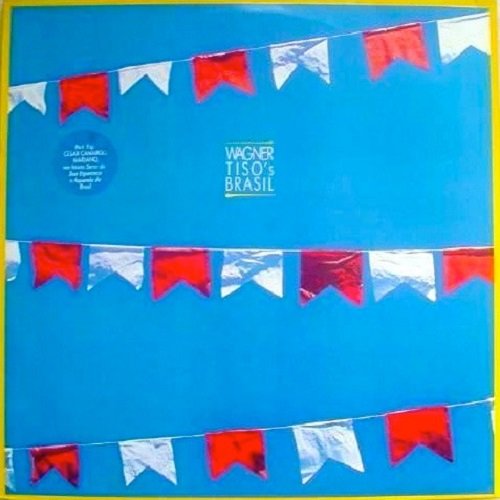Angel Recasens, La Grande Chapelle - El Gran Burlador (Música para el Mito de Don Juan) (2011)
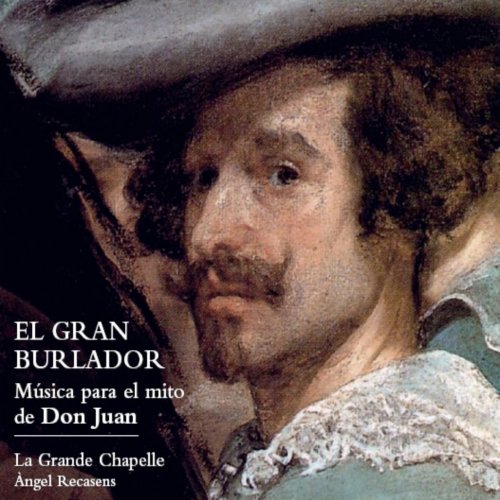
Artist: Angel Recasens, La Grande Chapelle
Title: El Gran Burlador (Música para el Mito de Don Juan)
Year Of Release: 2011
Label: Lauda Música
Genre: Classical
Quality: flac lossless (tracks)
Total Time: 01:05:41
Total Size: 306 mb
WebSite: Album Preview
TracklistTitle: El Gran Burlador (Música para el Mito de Don Juan)
Year Of Release: 2011
Label: Lauda Música
Genre: Classical
Quality: flac lossless (tracks)
Total Time: 01:05:41
Total Size: 306 mb
WebSite: Album Preview
01. Cristobal Galán: El Mar Está Hecho Troya
02. Juan Hidalgo: Dulce Ruiseñor
03. Giovanni Maria Trabaci: Secondo Tono Con Quattro Fughe
04. Juan Hidalgo: El Gran Burlador
05. Manuel Egüés: Un Hombre Sin Nombre
06. Bernardo Murillo: !Sevilla a Voces Me Llama...!
07. Abónimo: Aminta Sale Más Bella
08. Cristobal Galán: No Gima Nadie
09. Jean de Macque: Consonanze Stravaganti
10. Manuel Correa: !qué Largo Me Lo Fiáis !
11. Manuel Correa: Acentos de un Nuevo Eneas
12. Anónimo: Flores, !A Escuchar los Dos Ruiseñores !
13. Anónimo: Al Baile del Aldegüela
14. Juan Hidalgo: Quedito, Pasito
15. Cristóbal Galán: !qué Dulcemente Hiere!
16. Cristóbal Galán: Dies Irae
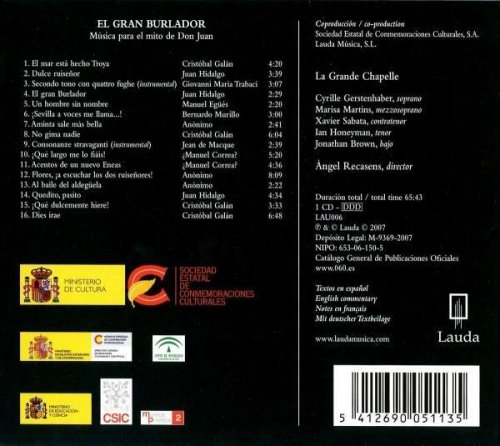
The CD “The Great Seducer” was conceived as a tribute to Tirso de Molina, whose masterpiece, El burlador de Sevilla y convidado de piedra, gave the world one of the universal legends of the history of literature –the legend of Don Juan– that has aroused much interest among dramatists and artists, and inspired Lorenzo Da Ponte and Mozart for their famous opera Don Giovanni.
This work re-creates, in a new way and as never before, one of the most important works of Spanish classical theatre. The course of the dramatic action of Don Juan is conveyed by means of a musical tour. The research team of "Música Poética", composed of Lola Josa, philologer at the Universidad de Barcelona and Mariano Lambea, musicologist at CSIC, by using a scientific, interdisciplinary method that had already been successfully applied in other projects, has poetically and musically illustrated the most relevant passages of Tirso's universal drama.
Don Juan is portrayed in relation to the cardinal points of his dramatic action: his four conquests –the noblewomen Isabela and doña Ana, and the commoners Tisbea and Aminta–, love's meaning –for him and for them–, his arrogance as a playboy, his birth as a new Aeneas... All this, with the aim of being able to follow the course of the legend, giving a voice and music to each protagonist.
Tirso's verses have been illustrated by turning to the music of the most inspired composers of Spain's Baroque period, such as Cristóbal Galán, Juan Hidalgo, Bernardo Murillo, Manuel Correa, Manuel de Egüés, and the inevitable anonymous composers. In many instances the majority of the compositions, in addition to being unpublished, are worldwide premiere recordings.
The use of a variety of registers from the 17th century Spanish repertory is prominent: from pieces of extraordinary and penetrating lyricism, masterfully executed by the sopranos Cyrille Gerstenhaber and Marisa Martins, to tonos humanos (secular songs), instrumental interludes by Trabaci and Macque, chapel masters from Naples –where the action begins–, folk rhythms and dances, and the magnificent 12-voice Dies irae sequence by Galán that concludes the register. Àngel Recasens, in his last recording –a posthumous one–, gives us some emotive and elegant performances that aim for dramatic purpose and proportionality, converting a practically unknown repertory into works destined to endure.
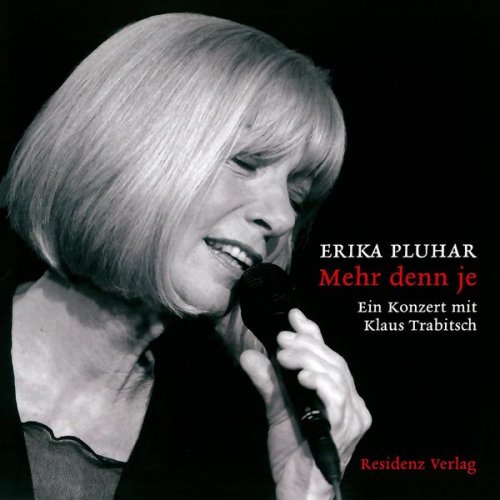
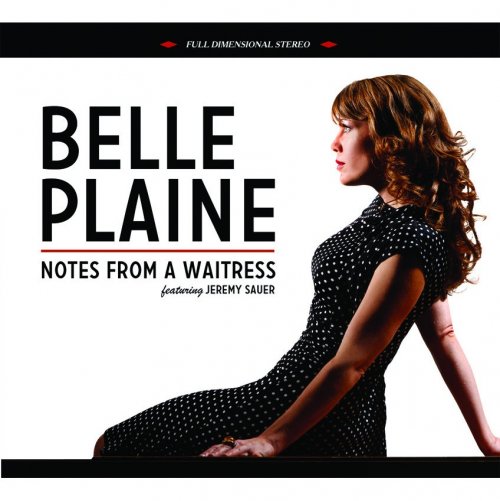
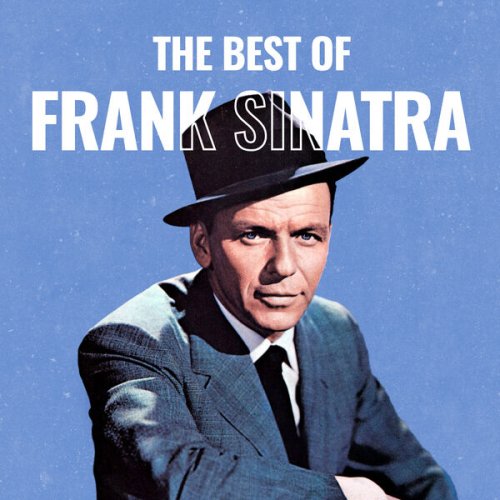

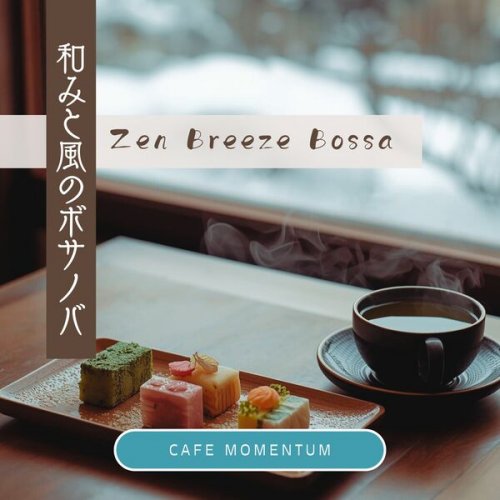
![Juliet Wood - Sconsolato (2019) [Hi-Res] Juliet Wood - Sconsolato (2019) [Hi-Res]](https://www.dibpic.com/uploads/posts/2025-12/1766736740_xoygz7sftgiab_600.jpg)
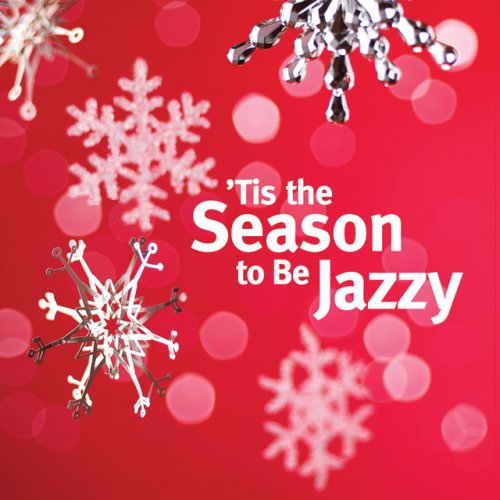
![Turma da Gafieira - Samba Em Hi-Fi (2022) [Hi-Res] Turma da Gafieira - Samba Em Hi-Fi (2022) [Hi-Res]](https://img.israbox.com/img/2025-12/25/uoi60ek915jn9jylif45ufqxd.jpg)
